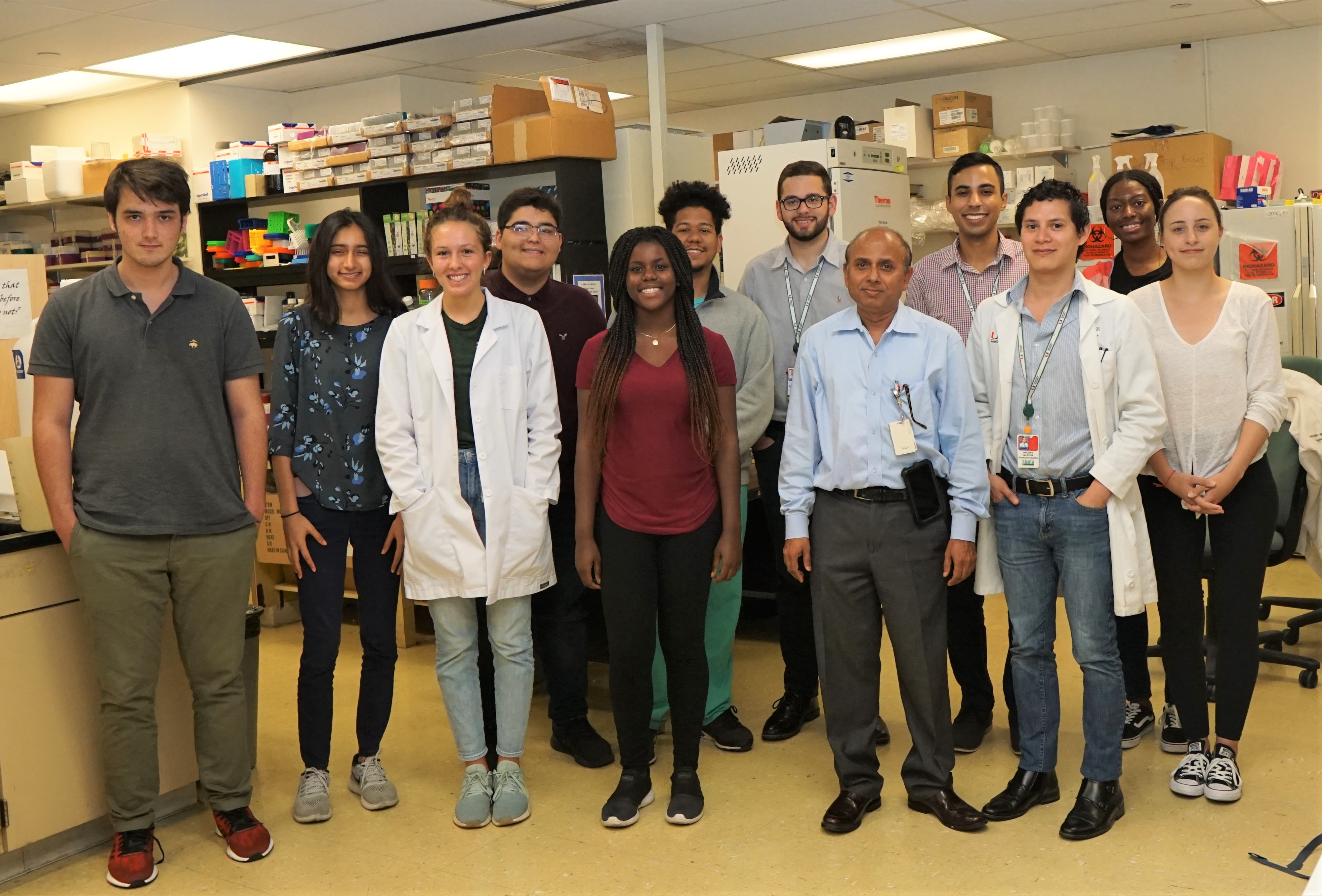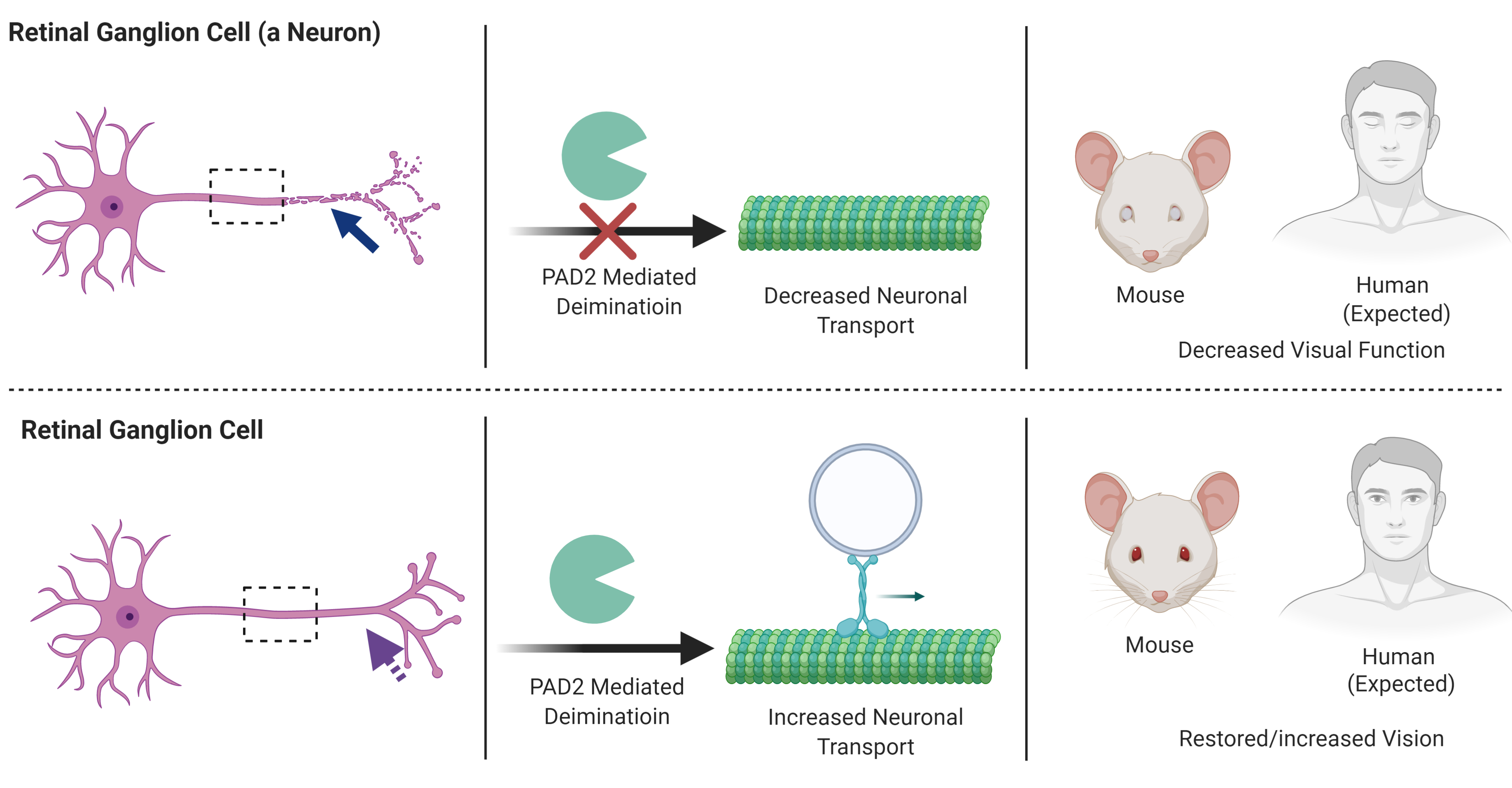Multiple Sclerosis
The Role of Protein Deimination in Restoring Visual Function in MS Patients



Posted June 19, 2020
Sanjoy Bhattacharya, Ph.D., University of Miami

Some research indicates that fixing a process called deimination may help prevent vision loss associated with multiple sclerosis (MS). Deimination refers to the posttranslational modification of protein-bound arginine into protein-bound citrulline, a process catalyzed by peptidylarginine deiminase2 (PAD2) in the human nervous system. Preliminary studies indicate that restoration of deimination to its normal levels in retinal ganglion cells results in halting the progression of vision loss, pointing to dendritic outgrowth, neuronal connectivity, and enhanced axonal transport as potential underlying mechanisms. However, the mechanism by which regulation of deimination relates to visual dysfunction in MS is still unknown.
Dr. Sanjoy Bhattacharya and his team, supported by a Fiscal Year 2015 Multiple Sclerosis Research Award Investigator-Initiated Research Award (IIRA), have been studying deimination and its role in visual function in MS patients. The focus of Dr. Bhattacharya’s study was on deimination in neurons found in MS patients with progressive vision loss. The investigators hypothesized that correction of deimination in retinal ganglion cells would restore vision due to normalization of compartmental mRNA, protein transport, and protein translation in neuronal cells. They observed that deimination is upregulated during early neuronal development while declining to low basal levels in adults. They also observed that overexpression of the deiminating cytosolic enzyme PAD2 in retinal ganglion cells results in increased neuronal transport and neurite outgrowth. Additionally, they found that enriching deiminated proteins rescues transport deficiencies both in primary neurons and mouse optic nerve even in the presence of pharmacological transport blockers. The deimination-induced regenerative neurite outgrowth in adults appeared to underlie functional visual restoration. They concluded that deimination promotes neuronal outgrowth via enhanced transport and local protein synthesis and represents a new avenue for neuronal regeneration in the adult central nervous system.

This work, published in Molecular Neurology in 2019, has far-reaching implications as many neurodegenerative diseases, such as glaucoma, Alzheimer’s disease, and demyelinating diseases, are associated with impaired axonal transport, the reversal of which may enhance neurite outgrowth and lead to the restoration of visual function. The proposed mechanism of deimination as one of the intrinsic regulators of recalibrating regenerative connectivity could be a new direction for functional restoration.

Publication:
Ding D, Enriquez-Algeciras M, Valdivia AO, et al. 2019. The role of deimination in regenerative reprogramming of neurons. Mol Neurobiol 56(4):2618‐2639.
Link:
Last updated Thursday, December 5, 2024














